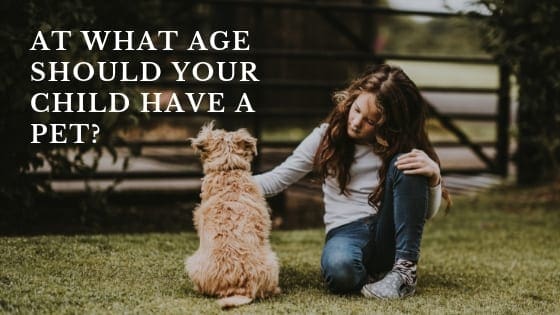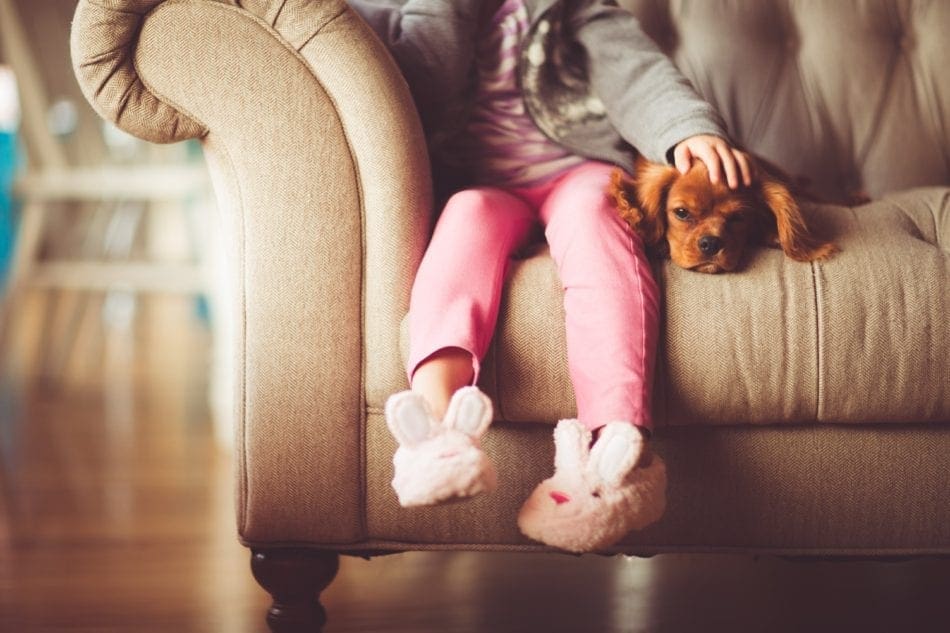
I am frequently asked about the right age for children when it comes to adding a companion animal to the family. In general, it depends on the particular child and the preparation and education done by the parent. My daughter, as a preschooler, was as gentle with our cats as I could’ve ever hoped for. On the other hand, I have been in homes with children who are six or older where the decision to bring home a pet resulted in injury (either to the child or the companion animal).
Choose the Right Pet
Don’t make impulsive decisions about bringing an animal into your home. This is an important decision that affects the animal and your family. Take the time and do your homework to make sure you’ve made a good decision. Too many animals end up being brought to shelters, banished to the outdoors or worse, euthanized, because of bad decisions on the part of the new pet parents.
Make sure your family will have the time for a pet. While it may seem like a fun idea at first, will this pet get the time and attention necessary? Life for an animal is more than just shelter, food and water. This pet will need training, attention, and most of all, love. If you’re thinking of getting a kitten because your children think they are the cutest animals, keep in mind that a kitten can be easily injured by rough or inappropriate handling. Also, a kitten grows into an adult cat by one year of age and will look grown by six months. If the appeal is only with the look of a young kitten, how will your children and family feel about the cat when he no longer has that kitten face? It may seem harsh, but I’ve seen a number of cats lose the attention of the family or even end up in shelters because they’re not “cute” anymore.

Photo: Andrew Branch for Unsplash
Nothing Comes Before Safety
Regardless of a child’s age, there’s nothing more important than safety when it comes to interaction with an animal. If you’ve had a pet in your family for years and that animal has always been gentle and tolerant, it’s still important to teach your children (if old enough) how to interact, how to read body language signals and when to leave the pet alone. Keep in mind that with toddlers, their arms and legs will move without much control. Sudden grabbing of a cat’s tail as he passes by, or sudden running up to the dog’s food bowl as puppy is eating may happen before you can give instructions otherwise. A child should never be left unsupervised around the family pet. Pets also need to know they have total security when engaging in mealtime, elimination activity or sleeping.
Hugging is something children naturally love doing and will often hug their stuffed animals. It makes sense that they assume living animals would love to be hugged as well. Unfortunately, hugging is a behavior dogs and cats don’t engage in so they may not understand that affection is the motive behind being tightly squeezed by a child. You can find many pictures on social media of kids hugging the family dog and the parents posted the pictures because they taught they were so cute. In many cases though, the dogs often look confused and stressed.
The Responsibility is on You
Don’t put the responsibility of the pet’s welfare on your young child. It’s ok to ask a child to be your “assistant” and help fill the food or water bowl but don’t expect a young child to be totally responsible for making sure the pet is fed or that fresh water is always available. Older children can help with the responsibility of some of those duties but I’ve seen too many pets suffer because parents put the complete responsibility on an easily distracted child who didn’t understand the consequences of not letting the dog out long enough to complete elimination or not regularly scooping the cat’s litter box. A child will also not be as observant of important changes in a pet that could indicate a potential health problem. Children who handle the pet duties should be old enough and responsible enough to also practice good hygiene by washing their hands afterward.
Building a Bond
Teaching children how to help train the pet is a good way to start building a bond. It can start with something as simple as daily play sessions so the child learns the importance of physical activity and playtime in an animal’s life. It will also help the pet develop a positive association with your child. Use toys and techniques that are safe and won’t cause the pet to feel threatened or become defensive. For example, teaching a child how to use an interactive toy to play with a cat is a wonderful way to strengthen the bond but the child needs to be old enough to know not to poke the cat or tease him. With dogs, demonstrate to your child the proper way to hold the leash and walk with the dog so it becomes a positive and safe experience for everyone rather than a tug-o-war.
Learn the ways your pet prefers to receive affection so you can demonstrate to your children the right way to stroke and interact. Model the behavior you want to see in your children. Show them how to approach the family pet, how to pet with an open hand and where to pet (certain animals have definite preferences). Also teach your young children not to pick up the pet. Being petted is one thing, but it can put the pet over the edge if he’s scooped up and held.
Safety Around Other Animals
Your child’s safety isn’t just limited to the pets you have in your own home, it extends to any animal your child meets. It’s crucial you instruct your children to always ask a pet parent before approaching or attempting to pet an unfamiliar animal.
Teach your children not to approach animals who are wandering by themselves. Even if the animal appears friendly, children should be instructed to always go get an adult if a dog or cat wanders into the yard. A dog wagging his tail doesn’t always necessarily mean he’s happy. This display can also indicate anxiety or uncertainty. Your children should learn to be cautious and not assume all animals are friendly.
Even as adults, it’s important for us to use common sense when approaching animals, yet I’ve repeatedly seen people make careless mistakes. Keep in mind that your children are watching what you do and they will imitate that behavior.
Body Language 101
There are some basics to animal body language age-appropriate children should be taught. Explain what certain ear positions mean, what particular body postures are saying and how to interpret vocalizations.
Supervision
Animals and young children should always be supervised. Situations can change in a heartbeat so never allow them alone together until the children are old enough to fully understand how to interact safely with animals – and even then, be very mindful about how much freedom to allow.
Make sure there are safe areas for the pet that are basically “kid free” zones. All pets should have places where they can go to chill out and relax.
Love That Lasts a Lifetime
Although all the caution and supervision may make it sound as if there’s such a risk involved in a child/animal relationship, remember that there’s educational safety and supervision involved in everything your children first experience. Whether it’s introducing your baby to new foods, riding a bike, having a sleepover at a friend’s house, walking to school on their own, or riding in a car, children have to learn safety rules. So don’t let that discourage you from giving your children the opportunity to experience loving an animal.
The companionship of a feline or canine family member can be one of the most rewarding gifts a child receives. The relationship can also provide valuable lessons for children that will benefit them throughout life. Through their relationship with the family pet they learn compassion, empathy, patience and kindness. Having had those relationships with animals can also be something your children will cherish for the rest of their lives.
Need More Information?
For more information on catbehavior and training, refer to the books by Pam Johnson-Bennett. Pam’s books are available at bookstores and online. We’ve included links to Amazon here on our website.


